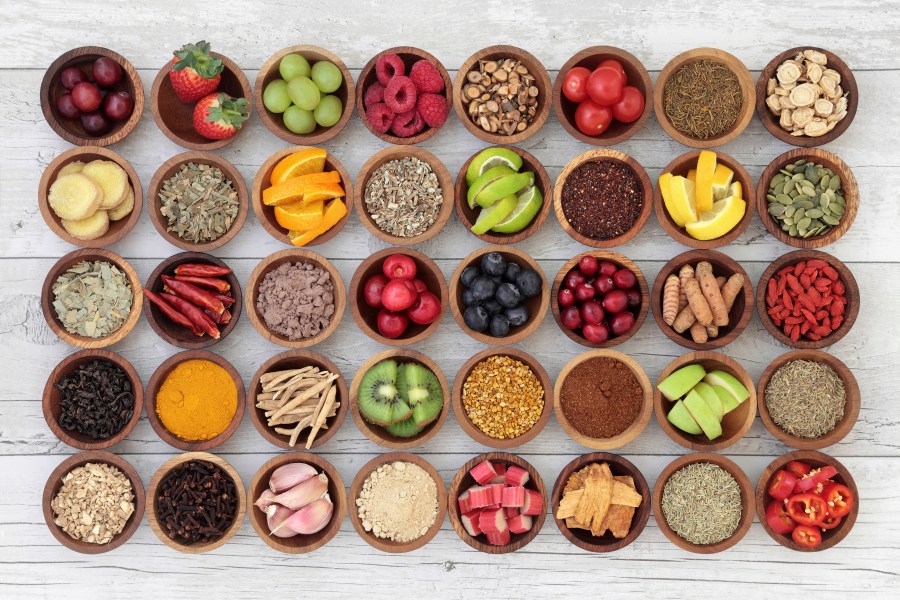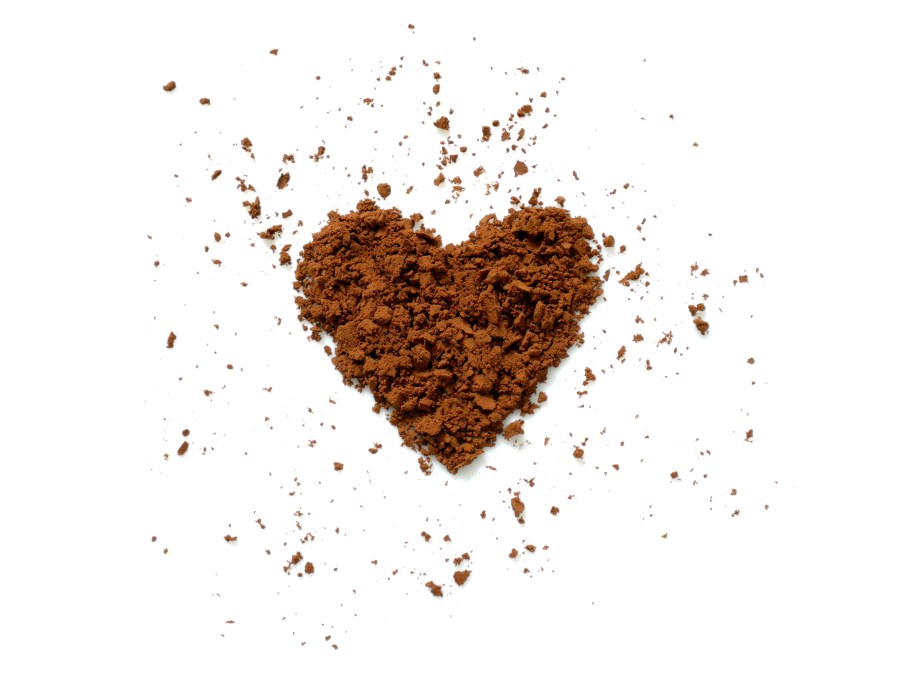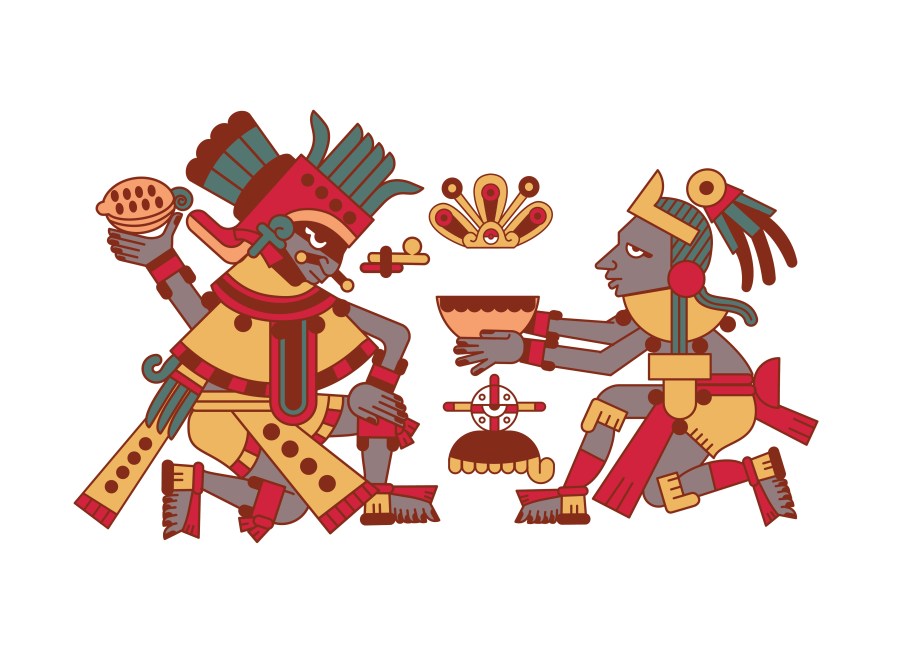Chocolate is one of the most popular treats worldwide. It is often associated with indulgence and guilt, but did you know that consuming chocolate in moderation can be a tasty way to boost your immune system?
In this article, we will discuss the various components of chocolate that can help boost your immune system, the health benefits of consuming chocolate for your immune system, the types of chocolate that are good for your immune system, and the right amount of chocolate to consume to maximize its benefits.
See the bottom of the article for a glossary of terms used.
Components of Chocolate that Boost Immune System

Chocolate is a complex food that contains several components that can help boost your immune system. One of the most important is antioxidants, which are essential in fighting against free radicals that can cause cellular damage. Chocolate contains a large amount of flavonoids, which are powerful antioxidants that can help reduce inflammation and improve blood flow. Theobromine, a compound that is similar to caffeine, is also found in chocolate and has been shown to help reduce coughing and may have antimicrobial properties.
Information on the types of antioxidants and flavonoids found in chocolate and their specific health benefits:
- Antioxidants: Chocolate is rich in antioxidants, which are compounds that help to protect the body against oxidative stress and damage caused by free radicals. The antioxidants found in chocolate include:
- Polyphenols: These are a type of antioxidant found in cocoa beans that have been shown to have anti-inflammatory properties and to help reduce the risk of heart disease.
- Epicatechin: This is a flavonoid that is found in high concentrations in cocoa beans and has been shown to improve blood flow and reduce the risk of cardiovascular disease.
- Procyanidins: These are a type of flavonoid that are found in high concentrations in dark chocolate and have been shown to improve blood flow, lower blood pressure, and reduce the risk of heart disease.
- Flavonoids: Flavonoids are a group of antioxidants that are found in many plant-based foods, including cocoa. The flavonoids found in chocolate include:
- Flavanols: These are a type of flavonoid that are found in high concentrations in cocoa beans and have a variety of health benefits. Some specific health benefits of flavanols found in chocolate include:
- Improved cardiovascular health: Flavanols have been shown to improve endothelial function, which is the ability of the blood vessels to dilate and contract properly. This can lead to improved blood flow and a lower risk of cardiovascular disease.
- Improved cognitive function: Flavanols have been shown to improve cognitive function, particularly in the areas of attention, working memory, and processing speed.
- Improved insulin sensitivity: Flavanols have been shown to improve insulin sensitivity, which can help to reduce the risk of type 2 diabetes.
Overall, the antioxidants and flavonoids found in chocolate offer a variety of potential health benefits. However, it’s important to keep in mind that chocolate should be consumed in moderation as part of a balanced diet, as it can be high in calories, sugar, and fat. By choosing high-quality, dark chocolate with a high percentage of cocoa solids and enjoying it in moderation, you can enjoy its delicious taste while reaping its potential health benefits.
Health Benefits of Consuming Chocolate for Immune System

The components in chocolate can help boost your immune system in several ways. For instance, the flavonoids in chocolate can help reduce inflammation and oxidative stress, both of which can weaken the immune system. Additionally, the antioxidants in chocolate can help fight against free radicals that can damage cells and lead to diseases. Finally, theobromine in chocolate has been shown to have anti-inflammatory properties and may help fight against bacteria and viruses.
Types of Chocolate and Their Health Benefits
Not all chocolate is created equal when it comes to boosting your immune system. Milk chocolate, for instance, has a lower percentage of cocoa than dark chocolate and is often combined with other ingredients that may reduce its health benefits. On the other hand, dark chocolate has a higher percentage of cocoa and fewer additives, making it a better choice for boosting your immune system. When choosing chocolate, look for one that has a cocoa content of at least 70%.
In addition to dark chocolate, there are other types of chocolate that are considered healthy options. For example, raw cacao is unprocessed chocolate that is rich in antioxidants and flavonoids. Cacao nibs are small pieces of roasted cacao beans that can be added to smoothies, oatmeal, or other dishes for an extra boost of antioxidants. Chocolate that is labeled as “sugar-free” or “sweetened with stevia” may also be a healthier option, as it contains less sugar and fewer calories than traditional chocolate.
The Right Amount of Chocolate to Boost the Immune System

While chocolate can provide many health benefits, it is important to consume it in moderation. Too much chocolate can lead to weight gain, which can have a negative impact on your immune system. As a general rule, aim to consume no more than one to two ounces of dark chocolate per day.
Resources on Chocolate
If you want to learn more about the health benefits of chocolate, there are many resources available. Books such as “The Healing Powers of Chocolate” by Cal Orey and “The Chocolate Therapist” by Julie Pech offer in-depth information on the health benefits of chocolate. Websites such as the International Cocoa Organization and the National Confectioners Association also offer valuable resources on chocolate.
Chocolate is a tasty way to boost your immune system when consumed in moderation. The various components of chocolate, such as antioxidants, flavonoids, and theobromine, can help reduce inflammation, fight diseases, and improve overall health. When choosing chocolate, opt for dark chocolate with at least 70% cocoa content, and consume no more than one to two ounces per day to maximize its benefits. By incorporating chocolate into a balanced and healthy diet, you can enjoy its delicious taste while also benefiting your immune system. However, it’s important to remember that chocolate should not be relied on as a sole source of nutrients and should be consumed in moderation as part of a balanced diet.
while also benefiting your immune system. However, it’s important to remember that chocolate should not be relied on as a sole source of nutrients and should be consumed in moderation as part of a balanced diet.
Chocolate can be a delicious and healthy way to boost your immune system. Its components such as antioxidants, flavonoids, and theobromine have been shown to have immune-boosting properties. When selecting chocolate, opt for dark chocolate with a high cocoa content and consume in moderation. By incorporating chocolate into a healthy diet, you can enjoy its delicious taste while also benefiting your immune system.
Additional Resources
- The Healing Powers of Chocolate by Cal Orey
- The Chocolate Therapist by Julie Pech
- International Cocoa Organization
- National Confectioners Association
Understanding the Different Types of Chocolate

Chocolate comes in various types and forms, each with its own unique flavor, texture, and health benefits. Here are some common types of chocolate and their health benefits:
- Dark Chocolate: Dark chocolate contains a higher percentage of cocoa solids and fewer additives than other types of chocolate, making it a healthier option. It is rich in antioxidants, flavonoids, and theobromine, which have been shown to improve heart health, reduce inflammation, and boost the immune system.
- Milk Chocolate: Milk chocolate contains less cocoa and more milk and sugar than dark chocolate, making it a less healthy option. While it may still contain some antioxidants and flavonoids, the added milk and sugar can offset its health benefits.
- White Chocolate: White chocolate contains no cocoa solids and is made primarily of sugar, milk, and cocoa butter. It does not offer the same health benefits as dark chocolate and should be consumed in moderation.
- Raw Cacao: Raw cacao is unprocessed chocolate that is rich in antioxidants and flavonoids. It is available in powder form and can be added to smoothies, oatmeal, or other dishes for an extra boost of antioxidants.
- Cacao Nibs: Cacao nibs are small pieces of roasted cacao beans that can be added to smoothies, yogurt, or baked goods for an extra crunch and boost of antioxidants.
When selecting chocolate, it’s important to look for a high percentage of cocoa solids and fewer additives, as this will offer the most health benefits. Dark chocolate with a cocoa content of 70% or higher is a good choice, as it contains the most antioxidants and flavonoids. Chocolate that is labeled as “sugar-free” or “sweetened with stevia” may also be a healthier option, as it contains less sugar and fewer calories than traditional chocolate.
What the Studies Say

Several studies have suggested that consuming chocolate can have a positive effect on the immune system. For example, a study published in the British Journal of Nutrition in 2008 found that consuming high-flavanol cocoa for 12 weeks resulted in an increase in immune system cells, including T cells and natural killer cells, in healthy adults. Another study published in the Journal of Nutrition in 2016 found that consuming dark chocolate with a high percentage of cocoa solids for four weeks resulted in an increase in T cells and cytokines, which are important components of the immune system, in healthy adults.
The methodology of these studies generally involves participants consuming chocolate with a high percentage of cocoa solids or high-flavanol cocoa for a set period of time, while a control group consumes a placebo. Blood samples are then taken from participants to measure changes in immune system cells and cytokines. The sample size of these studies varies, but they generally involve a relatively small number of participants, ranging from 10 to 60 individuals.
While these studies suggest that consuming chocolate can have a positive effect on the immune system, it’s important to note that more research is needed to fully understand the mechanisms behind this effect and to determine the optimal amount and type of chocolate for immune system support.
It’s important to keep in mind that consuming excessive amounts of chocolate can have negative health effects, such as weight gain and dental problems. Therefore, it’s important to consume chocolate in moderation as part of a healthy and balanced diet.
While research suggests that chocolate can have immune-boosting properties, more research is needed to fully understand this effect. The methodology of these studies involves participants consuming chocolate with a high percentage of cocoa solids or high-flavanol cocoa, while a control group consumes a placebo. While the sample size of these studies is relatively small, the results are promising and suggest that consuming chocolate in moderation may offer immune system support.
Is there Such a Thing as Too Much Chocolate?
While chocolate can offer potential health benefits when consumed in moderation, consuming too much chocolate can have negative health effects. One potential risk of consuming too much chocolate is weight gain. Chocolate is high in calories and can contribute to weight gain if consumed in excess. This is especially true for milk chocolate and other types of chocolate that contain added sugar and fat.
Another potential risk of consuming too much chocolate is dental problems. Chocolate contains sugar, which can contribute to tooth decay and cavities. Additionally, sticky and chewy chocolate candies can get stuck in between teeth and contribute to dental problems.
In addition to these risks, consuming too much chocolate can also lead to caffeine consumption. Chocolate contains caffeine, which can cause jitteriness, anxiety, and difficulty sleeping if consumed in excess.
It’s important to consume chocolate in moderation as part of a healthy and balanced diet. This means choosing high-quality, dark chocolate with a high percentage of cocoa solids and limiting consumption to a few ounces per week. Additionally, it’s important to practice good dental hygiene and to limit intake of other sources of added sugar and fat.
While chocolate can offer potential health benefits, consuming too much chocolate can have negative health effects, including weight gain, dental problems, and caffeine consumption. Therefore, it’s important to consume chocolate in moderation as part of a healthy and balanced diet.
A Brief History of Chocolate and its Use

Chocolate has a rich history dating back thousands of years. The ancient Maya and Aztec civilizations of Central America are believed to be the first to cultivate cacao, the plant from which chocolate is made. They used cacao in traditional medicine and religious ceremonies, often mixing it with water or other ingredients to create a bitter drink.
When the Spanish conquered Central America in the 16th century, they brought cacao back to Europe where it quickly became popular among the wealthy. It was often served as a hot drink mixed with sugar and other spices, and it became associated with luxury and indulgence.
Over time, chocolate continued to evolve and became more widely available to people of all classes. It was used in a variety of forms, including chocolate bars, truffles, and other candies. In many cultures, chocolate has taken on a symbolic and cultural significance, often associated with love, celebration, and comfort.
In addition to its culinary uses, chocolate has also been used in traditional medicine and rituals throughout history. The ancient Maya and Aztecs used cacao to treat a variety of ailments, including fever, coughs, and digestive problems. In some cultures, chocolate has also been used as an aphrodisiac or as a symbol of fertility.
Chocolate has a long and rich history dating back thousands of years. It has been used in traditional medicine and rituals and has taken on a cultural significance in many cultures, often associated with luxury, indulgence, and celebration. Understanding the cultural significance of chocolate can help us appreciate its role in our lives and the ways in which it has shaped our history and traditions.
Recipes and Ideas
Here are some recipes and ideas for incorporating chocolate into a healthy diet:
- Chocolate Oatmeal: Mix 1 tablespoon of cocoa powder into your cooked oatmeal along with a handful of berries and nuts for a delicious and nutritious breakfast.
- Dark Chocolate Trail Mix: Combine your favorite nuts, seeds, and dried fruits with some dark chocolate chips for a tasty and satisfying snack.
- Chocolate Smoothie: Blend together almond milk, a frozen banana, 1 tablespoon of cocoa powder, and a handful of spinach for a nutritious and chocolatey smoothie.
- Chocolate-Covered Strawberries: Dip fresh strawberries in melted dark chocolate for a sweet and healthy dessert.
- Chocolate Bark: Melt dark chocolate and spread it onto a baking sheet lined with parchment paper. Sprinkle with chopped nuts, seeds, and dried fruits, and let cool in the fridge until solid. Break into pieces for a delicious and nutritious snack.
- Chocolate Energy Bites: Mix together oats, almond butter, honey, cocoa powder, and chia seeds. Roll into small balls and refrigerate until firm. These bites make a great pre- or post-workout snack.
- Chocolate Chia Pudding: Mix together chia seeds, almond milk, cocoa powder, and a touch of honey. Let sit in the fridge for at least an hour, or overnight, to thicken. Top with fresh berries and nuts for a delicious and healthy dessert.
Remember to choose dark chocolate with at least 70% cocoa solids to maximize the health benefits. Also, be mindful of portion sizes and balance chocolate consumption with other healthy foods as part of a balanced diet.
In summary, chocolate can be a tasty and healthy addition to your diet when consumed in moderation. By choosing the right type of chocolate and enjoying it in small amounts, you can enjoy its delicious taste while reaping its immune-boosting benefits. Remember to always practice moderation and consult with a healthcare professional before making any significant changes to your diet.
Glossary
- Cocoa solids: The non-fat component of cocoa beans that contains the majority of the beneficial compounds found in chocolate, including flavonoids and antioxidants.
- Theobromine: A bitter alkaloid found in cocoa beans that has been shown to have potential health benefits, including stimulating the heart and improving blood flow.
- Flavonoids: A type of antioxidant found in cocoa solids and other plant-based foods that have been shown to have potential health benefits, including reducing inflammation and improving heart health.
- Polyphenols: A group of plant-based compounds found in chocolate that includes flavonoids and other antioxidants. Polyphenols have been shown to have potential health benefits, including reducing inflammation and improving cognitive function.
- Dark chocolate: Chocolate with a higher percentage of cocoa solids and lower amounts of added sugar and fat. Dark chocolate is often considered the healthiest type of chocolate because it contains the highest levels of flavonoids and other beneficial compounds.
- Milk chocolate: Chocolate that contains added milk powder or condensed milk. Milk chocolate has lower levels of beneficial compounds compared to dark chocolate and can contain higher amounts of added sugar and fat.
- White chocolate: Chocolate made with cocoa butter, sugar, and milk solids but without cocoa solids. White chocolate does not contain beneficial compounds found in dark chocolate and is considered the least healthy type of chocolate.
- Cocoa powder: A product made by removing most of the cocoa butter from ground cocoa beans. Cocoa powder contains higher levels of flavonoids and other beneficial compounds compared to chocolate that contains added sugar and fat.







